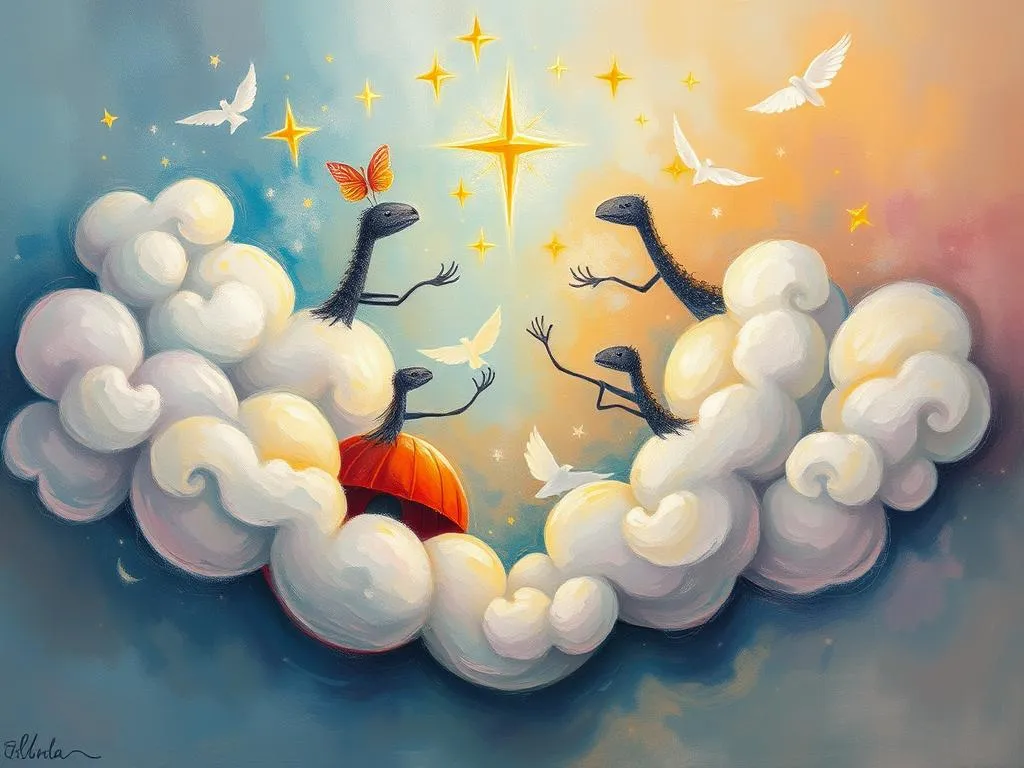
Introduction
Dreams have fascinated humanity for centuries, serving as a mysterious portal into our subconscious. Among the myriad of dreams that people experience, those involving significant symbols often captivate our attention. The exploration of dream symbolism is not merely an academic pursuit; it is an intimate journey into our emotions, fears, and desires. Understanding the relevance of these dreams can illuminate the hidden layers of our psyche, revealing insights that resonate deeply with our waking lives. The intrigue surrounding dreams lies in their ability to connect us to our inner selves, prompting reflection and a search for meaning.
Symbolism and Meaning
When delving into the symbolism of dreams, it is essential to recognize that symbols serve as the language of the unconscious mind. Each symbol can carry multiple meanings depending on the individual’s personal experiences and cultural background. Common symbols often manifest in dreams as representations of our thoughts, feelings, and situations we are navigating in our daily lives.
One prevalent symbol in dreams is water, which often signifies emotions and the subconscious. Clear water may represent clarity and peace, while turbulent water can indicate emotional turmoil or uncertainty. Dreaming of flying generally symbolizes a desire for freedom or escape, reflecting aspirations or a need to rise above challenges. Conversely, falling might signify feelings of loss of control or insecurity.
Another significant symbol is animals. The meaning can vary widely; for example, a lion might symbolize courage and strength, while a snake could represent transformation or hidden fears. Colors also play an essential role in dream symbolism. Bright colors may evoke feelings of joy and positivity, while darker hues might reflect anxiety or depression.
The interpretation of these symbols can shift dramatically based on context. For instance, dreaming of a house can represent the self. The condition of the house—whether it is well-kept or dilapidated—can indicate how one perceives their mental state or personal life. A house with many rooms could symbolize various aspects of the dreamer’s personality or life experiences, inviting an exploration of their multifaceted nature.
Cultural perspectives also influence dream symbolism. In some cultures, dreams are viewed as prophetic, while in others, they are seen as mere reflections of daily life. This diversity in interpretation emphasizes the importance of considering personal and cultural contexts when analyzing dream symbols.
Key Scenarios and Variations
Dreams can present a vast array of scenarios, each carrying unique implications. One common variation involves the chase dream, where the dreamer is pursued by an unknown entity. This scenario often symbolizes avoidance—typically of a particular emotion or situation in waking life. The nature of the pursuer can also offer insights; for example, being chased by a monster might represent an overwhelming fear, while being pursued by a familiar person could indicate unresolved issues with that individual.
Nightmares present another layer of complexity. A nightmare can be a manifestation of deep-seated fears or anxieties. The intensity of the dream often correlates with the severity of the emotions the dreamer is experiencing in their waking life. For example, dreaming of being trapped can signify feelings of helplessness or being overwhelmed by responsibilities.
Conversely, dreams of celebration or achievement, such as graduating or winning an award, often symbolize a desire for recognition or validation. These scenarios may also reflect the dreamer’s aspirations and hopes for the future, encouraging them to pursue their goals.
Another intriguing variation is the recurring dream. When the same dream reappears, it often indicates that the dreamer has unresolved issues or emotions that need to be addressed. These dreams serve as reminders from the subconscious, urging the dreamer to confront what they may be avoiding in their waking life.
The context of the dream scenario profoundly influences its interpretation. For example, if a person dreams of being lost in a familiar place, it may signify confusion or uncertainty in their life direction. However, if they dream of being lost in an unfamiliar territory, it could indicate a fear of the unknown or new experiences.
Real-Life Connections and Takeaways
Understanding the symbolism and scenarios within dreams can lead readers to profound insights. Recognizing recurring themes or symbols in one’s dreams provides an opportunity for self-reflection and personal growth. It encourages individuals to explore their emotions, fears, and desires more deeply.
For instance, if a person frequently dreams of flying, it might be worth considering areas in their life where they seek freedom or where they feel constrained. This realization can prompt a dialogue about what changes they might need to make to feel a greater sense of autonomy.
Similarly, those who experience chase dreams should reflect on what they might be avoiding in their lives. Acknowledging these fears can empower them to confront their challenges head-on, leading to personal development and emotional healing. It is crucial to embrace these dreams as opportunities for insight rather than dismissing them as mere figments of imagination.
Keeping a dream journal can be an effective tool for analyzing dreams. By documenting dreams upon waking, individuals can identify patterns and recurring symbols over time. This practice not only enhances dream recall but also allows for a deeper exploration of personal symbolism. Reflecting on emotions felt during dreams can also shed light on pressing issues in waking life, acting as a catalyst for change.
Engaging in self-reflection and mindfulness can deepen one’s understanding of dream symbolism. Meditation and quiet contemplation can create space for introspection, helping individuals connect their dreams with their conscious thoughts and feelings. This practice cultivates a greater awareness of one’s inner world, fostering a deeper comprehension of personal motivations and desires.
In addition to self-reflection, discussing dreams with trusted friends or a therapist can provide valuable insights. Others may offer perspectives that the dreamer hadn’t considered, enriching their understanding of what their dreams might signify. This collaborative exploration can lead to breakthroughs and a sense of community in facing shared human experiences.
Ultimately, the journey of dream interpretation is subjective and deeply personal. Each dreamer must navigate their unique landscape of symbols, scenarios, and emotions. By embracing the significance of their dreams, individuals can unlock a treasure trove of insights that guide them toward a more profound understanding of themselves and their lives.
In conclusion, dreams offer a fascinating glimpse into our subconscious, inviting us to explore the rich tapestry of our emotions and experiences. By dissecting the symbolism, recognizing key scenarios, and connecting these dreams to real-life situations, we can unveil the significance of our nocturnal narratives. The practice of interpreting dreams not only enhances self-awareness but also empowers us to confront our fears, embrace our aspirations, and navigate our waking lives with greater clarity and purpose. As we delve into our dreams, we embark on a journey of self-discovery, where the hidden meanings of our nighttime visions illuminate the path toward personal growth and fulfillment.







